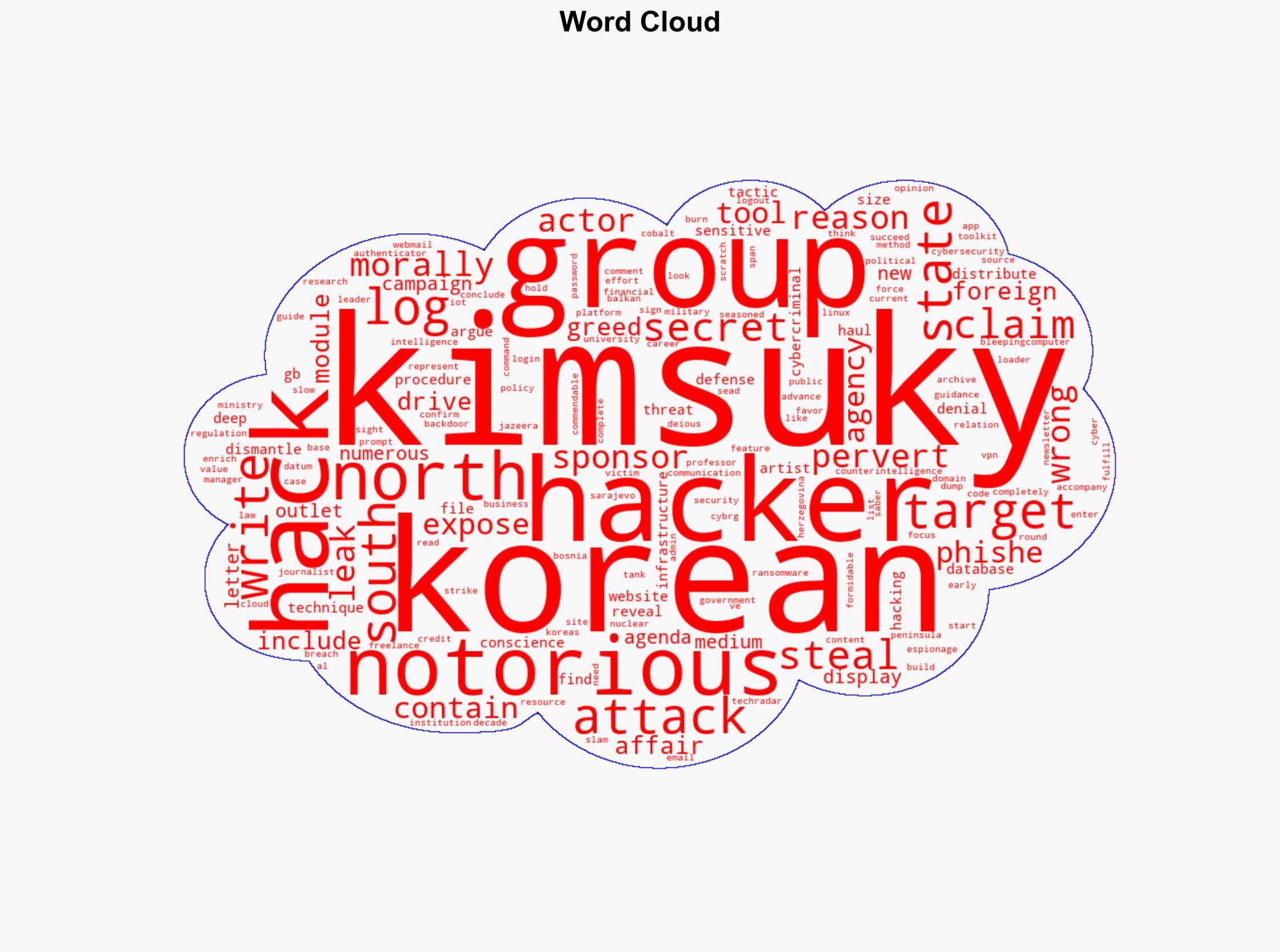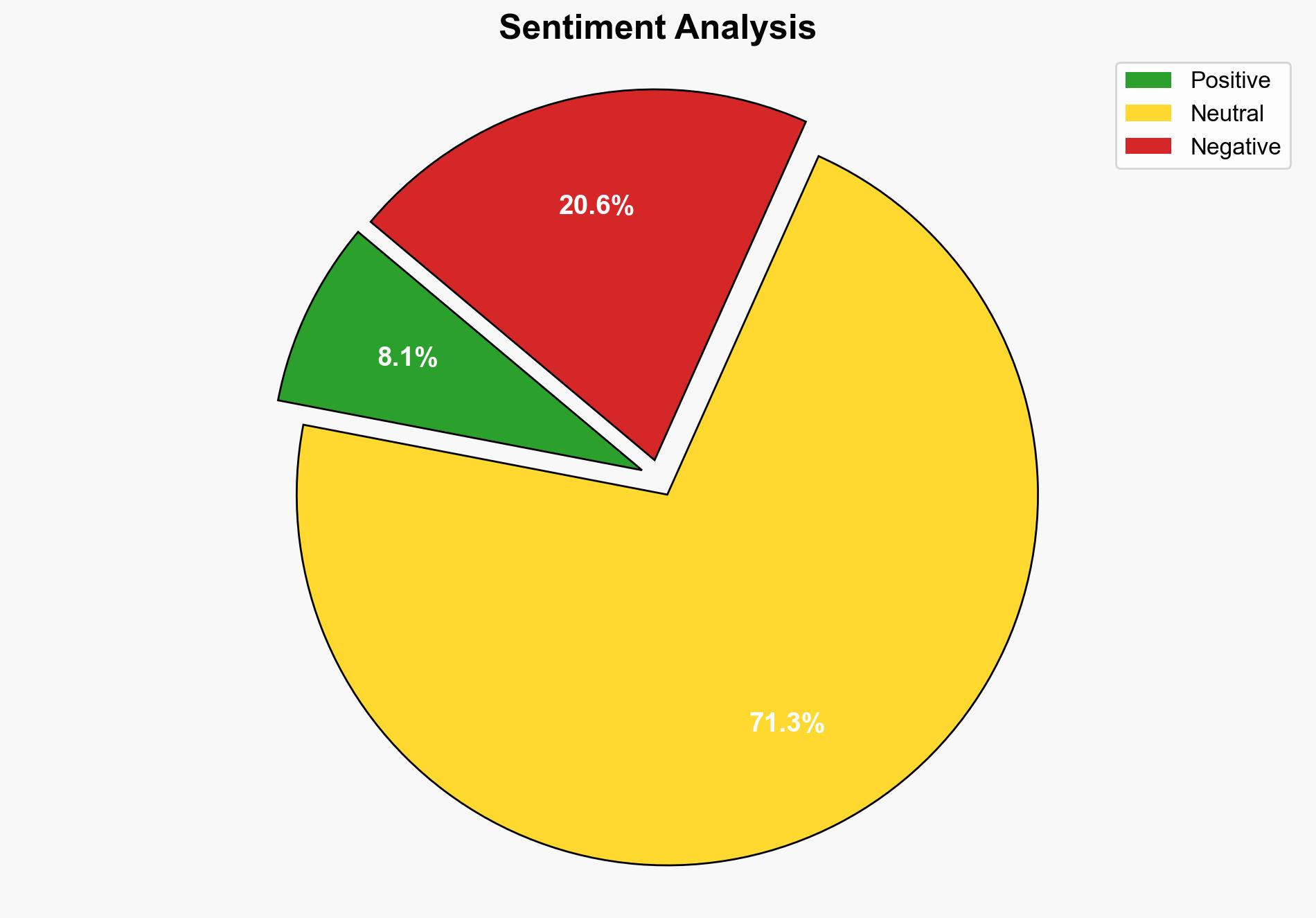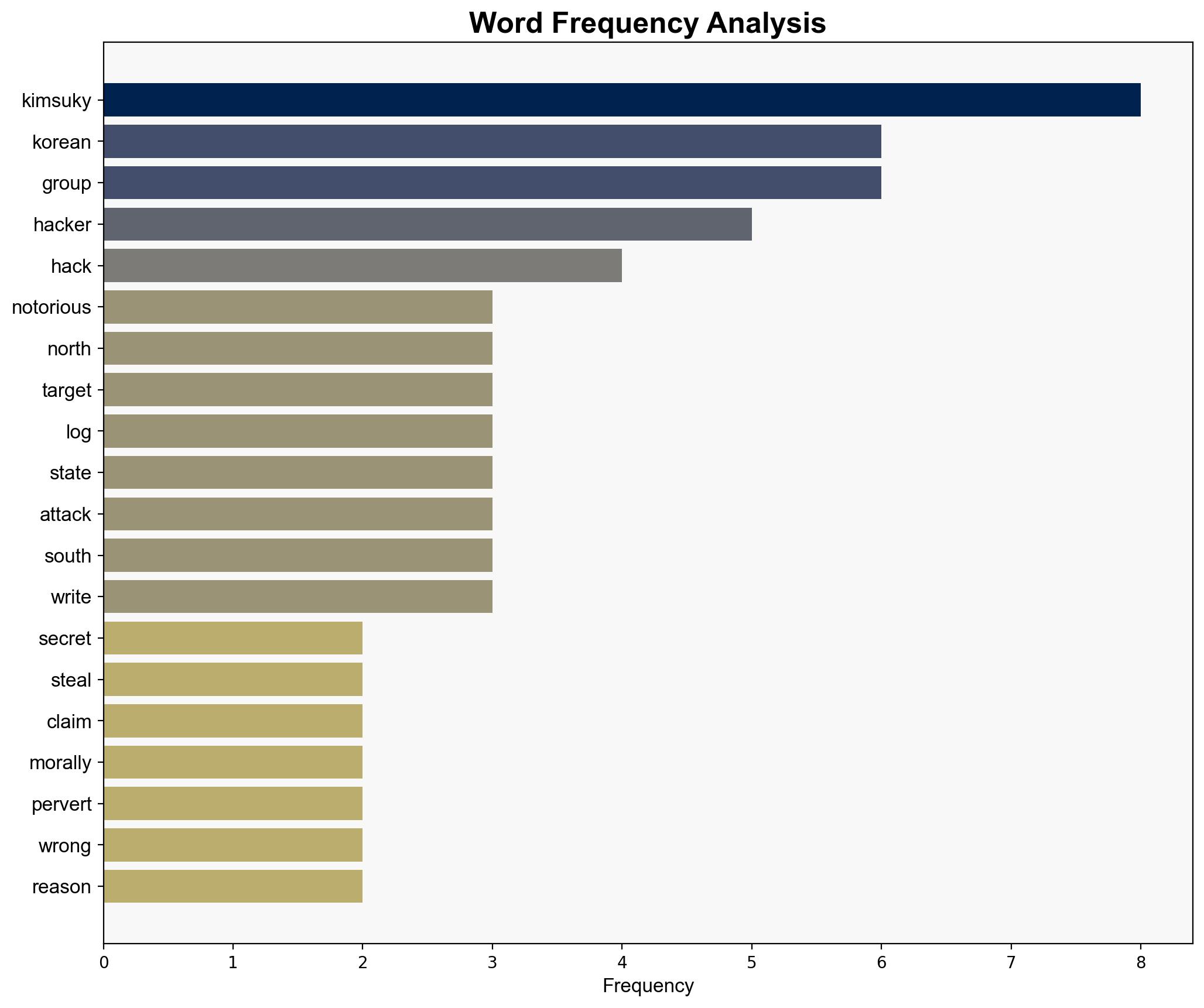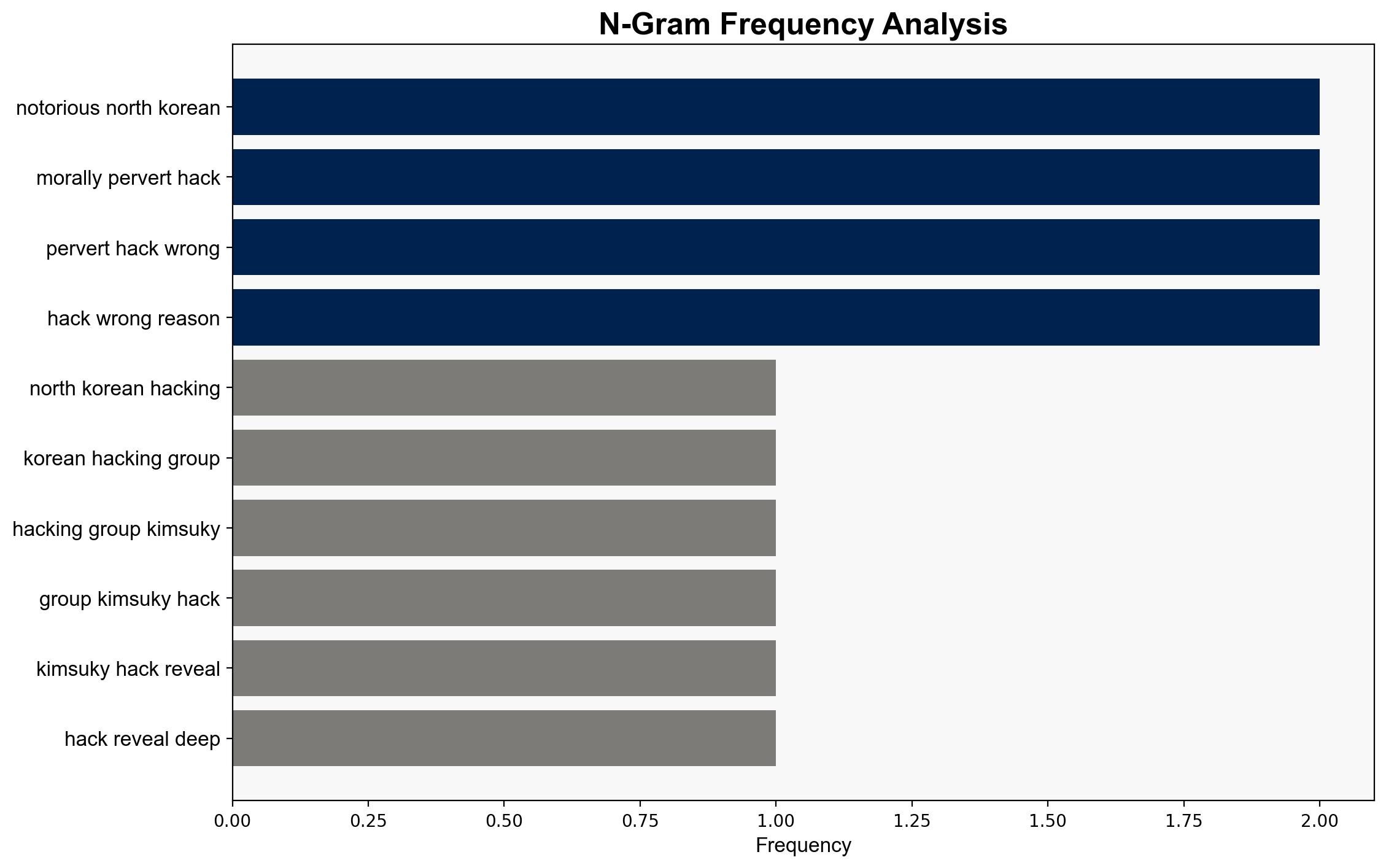Notorious North Korean hacking group Kimsuky gets hacked itself – revealing some of its deepest secrets – TechRadar
Published on: 2025-08-12
Intelligence Report: Notorious North Korean hacking group Kimsuky gets hacked itself – revealing some of its deepest secrets – TechRadar
1. BLUF (Bottom Line Up Front)
The hacking of Kimsuky, a North Korean state-sponsored group, potentially exposes vulnerabilities in North Korean cyber operations and reveals sensitive information about their tactics and targets. The most supported hypothesis is that the hack was conducted by a rival state or cyber group aiming to disrupt North Korean cyber capabilities. Confidence level: Moderate. Recommended action: Increase monitoring of North Korean cyber activities and enhance defenses against potential retaliatory actions.
2. Competing Hypotheses
1. **Rival State or Cyber Group Involvement**: The hack was orchestrated by a state or sophisticated cyber group intending to disrupt Kimsuky’s operations and expose their methods, thereby weakening North Korean cyber capabilities.
2. **Internal Discontent or Rogue Element**: The breach was the result of internal dissent within Kimsuky or a rogue element acting independently, possibly driven by ideological differences or personal grievances.
Using ACH 2.0, the first hypothesis is better supported due to the complexity and scale of the hack, which suggests significant resources and expertise typically associated with state or advanced cyber groups. The second hypothesis lacks evidence of internal dissent or rogue actions within Kimsuky.
3. Key Assumptions and Red Flags
– **Assumptions**: The assumption that Kimsuky has no internal dissent is critical to the first hypothesis. Additionally, it assumes that the hack required resources beyond those of an individual or small group.
– **Red Flags**: The lack of direct evidence linking the hack to a specific state or group is a significant gap. The possibility of deception by the hackers, who may have left misleading clues, is also a concern.
4. Implications and Strategic Risks
The exposure of Kimsuky’s operations could lead to a temporary reduction in their cyber capabilities, but it may also prompt North Korea to enhance their cyber defenses and retaliate against perceived adversaries. This incident could escalate tensions in cyberspace, particularly if a state actor is confirmed to be involved. Economically, the breach may impact entities previously targeted by Kimsuky, as they reassess their cybersecurity measures.
5. Recommendations and Outlook
- Enhance monitoring of North Korean cyber activities to detect potential retaliatory actions.
- Strengthen cybersecurity measures for entities previously targeted by Kimsuky.
- Scenario Projections:
- Best Case: The breach significantly disrupts Kimsuky’s operations, reducing their threat level.
- Worst Case: North Korea retaliates with increased cyber aggression, targeting critical infrastructure.
- Most Likely: Kimsuky regroups and adapts, leading to a temporary lull in their activities.
6. Key Individuals and Entities
No specific individuals are named in the intelligence. The primary entity involved is the Kimsuky hacking group.
7. Thematic Tags
national security threats, cybersecurity, counter-terrorism, regional focus




